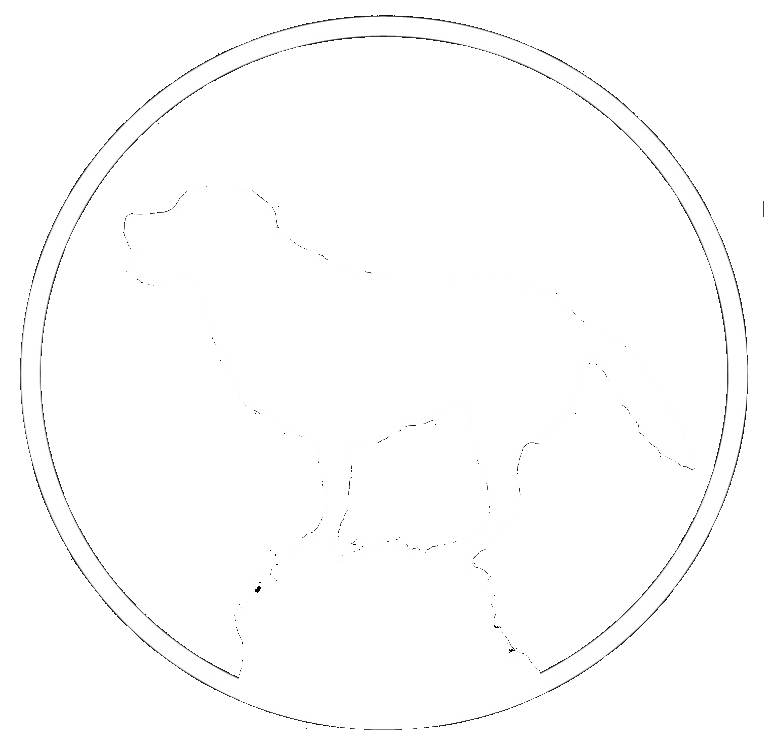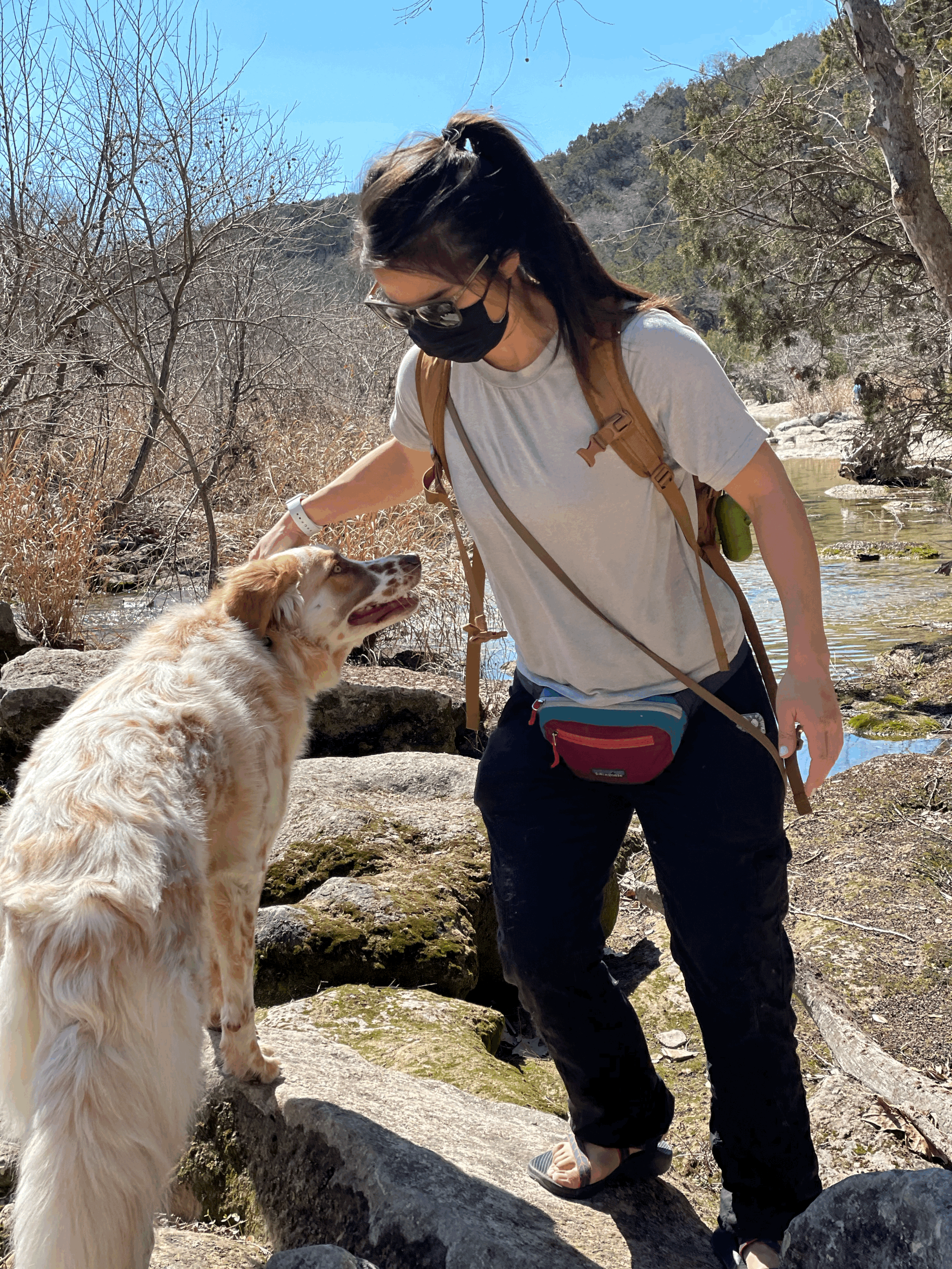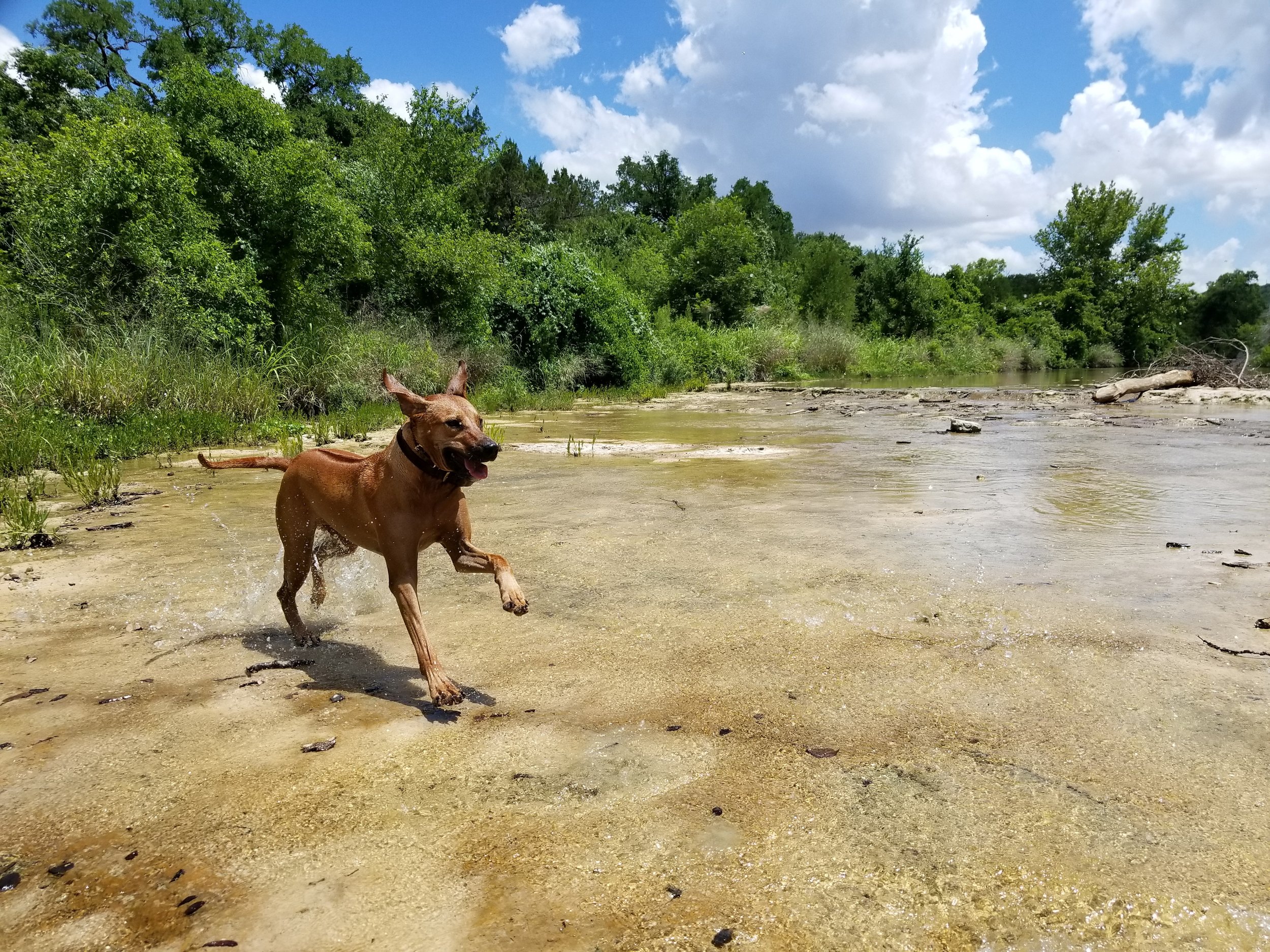The truth is that we can all be reactive
We apply the label “reactive to a dog who behaves this way habitually, but it’s a quality present in every living being. In humans we call it ‘being triggered.’ This means that in certain situations our level headed, appropriate, and mature responses go out the window. We ‘react’ in a way we don’t want to, one that is explosive, inappropriate and causes harm. This can be because a sensitive spot (or somewhere near it) was hit in either a painful way or a way that has historically been painful and we were trying to prevent that pain. Maybe the situation reminded us of our childhood or a past trauma and our survival system kicked in, causing us to act out of character in a way we habitually used to protect ourselves.
When these ‘reactive’ behaviors are in motion, in dogs I call this state ‘above threshold.’ We can keep our cool in most situations… except that one. We can choose a response in alignment with our values… right up until the moment we can’t. We can draw on our regulation and communication skills… until we completely forget them. Then we are sunk.
While reactivity can appear to come out of nowhere, there is usually a ‘loading’ stage before the explosion. This ‘loading’ stage is the zone in which we can exert influence to redirect or reeducate. Above threshold our only option is to attempt to contain the situation and minimize damage.
My therapist once told me that beyond our threshold we lose our steering. It can feel like an out of body experience as we watch ourselves say things we don’t like and do things we can’t stop. He said the only place where we can make a different choice is before ‘before we lose control’. In order to identify where this before the before is we need to build awareness in the process of us, essentially, going unconscious. We can review when we have behaved ‘reactively’ in the past and identify:
-our general stressors (area, type and amount)
-the problematic location, environment or setting
-the other players
-the types of interactions
-the words that were said
-the parts of us that these words touched (an emotion, value, or belief)
-any factors that remind us of a difficult experience in our past
-what was happening internally and externally before we reacted and, importantly, what was happening just before that
The way I have learned to cope with my own reactivity is with self awareness, in general of what has historically set me off and in the moment of how activated I am. I have a lot of tools I can use to regulate myself physiologically, many of which I learned and use regularly when I’m working with dogs and horses. These include deep breathing, somatic awareness, body scans, prayers or mantras I can repeat to ‘change my mind(set)’ and being in the habit of remembering to keep checking my meters and using these tools over and over, not just once.
When I can tell I’m feeling activated enough to risk losing my spot in the driver’s seat, when I struggle to remember my tools, or when the situation escalates or goes on too long (for me), I need to pause or exit. I have learned my internal warning signs so I can communicate when I’m entering the realm of reaching my limit (“heads up, I can only talk a little bit longer before I need to take a break”) and when I’m getting close to my limit (“hey, I’m at the line I don’t want to cross. I care about you and this conversation, but I have to excuse myself because I don’t want to say anything I will regret). Once I have reached my limit things get dicey quickly and I have to do what I have to do to get away.
The way we learn where that line is is by crossing it. In the process of gaining awareness, expect to cross it a few times and practice self compassion. The difference now is that we are taking those experiences and learning from them. We are gathering evidence, tracking trends, building a list of warning signs and identifying patterns. In every experience we can gain more insight and make a change. In the past I used to use each experience to build a case against myself as a terrible and unsafe person and build more shame. Turns out I wasn’t terrible, I was just forcing myself to stay somewhere I didn’t belong!
Okay, back to dogs
What’s the difference between a dog that reacts and one that is “reactive”? Whether they are capable of “not” reacting. In the presence of a trigger a reactive dog will lose their ability to be influenced or exercise self control and launch into an unmanageable and antisocial behavior cycle quickly and reliably (80% of the time or more). While many dogs reliably react and are on the reactivity spectrum, they do not deserve the label reactive. Especially since, I believe, with the right training and management this pattern is EXTREMELY easy to ease or extinguish in most dogs when the owners find the right trainer to help them.
image from Animal Humane Society
The reason I share all this is that it applies to dogs quite directly. Unlike us as independent adults that must navigate our reactivity on our own (after getting some help from a professional or loved one), our dogs rely on us to help them manage themselves. Think about the situation where your dog is “reactive”…. Maybe they:
-go from 0-100 when they bark at sounds around the house
-seem to unpredictably bark or lunge at other dogs
-snap from being your sweet pet to a cold blooded killer when they see a critter
-jump on company non-stop or frantically follow another dog around, shoving their nose wherever they can get it
Let’s say these are all situations where your dog ‘loses their mind,’ meaning that they go from acting to reacting, from thoughtful to impulsive, from controllable to uncontrollable. This is full on dangerous! Not in every moment it happens, but because the more often it happens the deeper that neural pathway is carved, meaning it could easily happen at a moment when danger is real and present - with a dog who doesn’t tolerate fools and may overcorrect with a bite, near a street when a car is coming, in an unfenced area where they can get lost, around a child they could accidentally seriously injure.
The fix
The way to address reactivity is not, as most of my clients come to me thinking, in the reactive moment or situation. If your dog freaks out when they see another dog on walks, you won’t be able to fix that on walks. Walks are the problem right now so they can’t be the solution. The place to fix it is literally everywhere else.
All about dat base(line)
Most owners are used to seeing their dog at, let’s say, a level 5/10 on the activation scale. A 5 can jump up to a 7 or 9 pretty quickly. If I let my dog get up to a 9 I’d also be pretty helpless. What I do differently from most dog owners is insist that my dog stay at a 1-2 as a baseline. Then when stimulation comes, they jump to a manageable 3 or 5, giving me plenty of room to redirect, educate and influence them so we can hopefully avoid getting up to a 6 or higher. If we can’t hang at a 1 or 2 at home, how can we expect a dog to roll that low out of the house or when their trigger is present? When we lock in the low baseline everywhere else, our reactivity problem may end up solving itself because we just won’t get near that problematic line.
The relationship
Almost everyone I talk to doesn’t know that their behavior problem is actually a relationship problem. They love their dog So Much and they share a lot of affection and intimacy. Unfortunately, from the dog’s perspective, that relationship doesn’t have a solid foundation and it shows in the dog's attitude and behavior outside of those cuddly moments. Because the owner doesn’t set boundaries (ones that are important to the dog) the dog doesn’t respect them. Because the owner doesn’t enforce boundaries or follow through on commands, the dog doesn’t trust them to advocate for or protect them. I wish that the way we are naturally inclined to act, responsibly, lovingly and affectionately, naturally earned and fostered our dogs’ respect for us. Unfortunately it doesn’t, as evidenced by more dogs than ever struggling right now. If we want our dog to behave differently, we need to shift how they see the world. If we want to change how they see the world, we need to change how they see us.
The mindset
I rarely meet an owner who doesn’t reward excited mindset. We think an excited dog is a happy dog and we love making our dog happy. We are overjoyed that we can receive a dog’s communication and identify and fulfill their need or desire that we do so immediately, accidentally rewarding a pushy mindset and setting a standard of instant gratification. With a heart full of love we are accidentally setting our dogs up for failure in the world. These dogs don’t have an incentive or opportunity to learn how to go from stimulated to calm because we rarely ask them to in the low stakes moments of our everyday lives. Then we end up frustrated and dismayed that our dogs can’t go from excited to calm, or even unmanageable to manageable, in the moments that are disruptive and dangerous.
The home
We can’t fix the walk on the walk. There is just too much going on - too much stimulation, too many uncontrollable variables and the baseline activation level is usually too high for learning to take place. We can’t start addressing our dog's jumping when company arrives. We can’t fix barking when the mail is being put into the box. Where do we have more quiet and control? At home! Owners love to tell me that their dog is fine at home, but the truth is that the expressions of the problematic mindset at home usually aren’t a problem for them. Unfortunately these moments are a problem for their problem.
At home we can shift our relationship with our dog by maintaining personal space boundaries, asking our dog to stay off the furniture and refrain from following us around the house, so we are setting and enforcing boundaries and earning their respect.
At home we can give our dog plenty of non negotiable opportunities to regulate out of an excited mindset by building a pause into activities and routines that are usually exciting, like feeding, leashing, opening doorways and playing.
At home we can astutely observe our dog, learning their physical, behavioral, and energetic cues so we can identify that ‘before the before’ stage of activation in a safe and controlled environment.
At home we can become someone our dog wants to listen to, is in the habit of listening to and, above all else, knows that they have to listen to. This isn’t mean, dominating or domineering. If you are reading this it’s because you care This Much about your dog and truly have their best interest at heart in every moment. Your dog will quickly see that and start to realize how much better life is when they just go ahead and follow your cues and do things your way.
Want to learn how to change your perspective so you can change your behavior and change your relationship with your dog and how they see the world? Check out my eCourse and Virtual Coaching Packages. I added my Two Weeks To Trained course to the Virtual Coaching Packages so you can not only learn the theory, but see how I put it into action with Arrow the beach dog in Mexico last winter. I have been getting great results with my coaching clients and I’m so happy to be able to work with owners from anywhere in the world. They start seeing results almost immediately and that is what I want for every dog owner because our dogs deserve a better life right now!

















